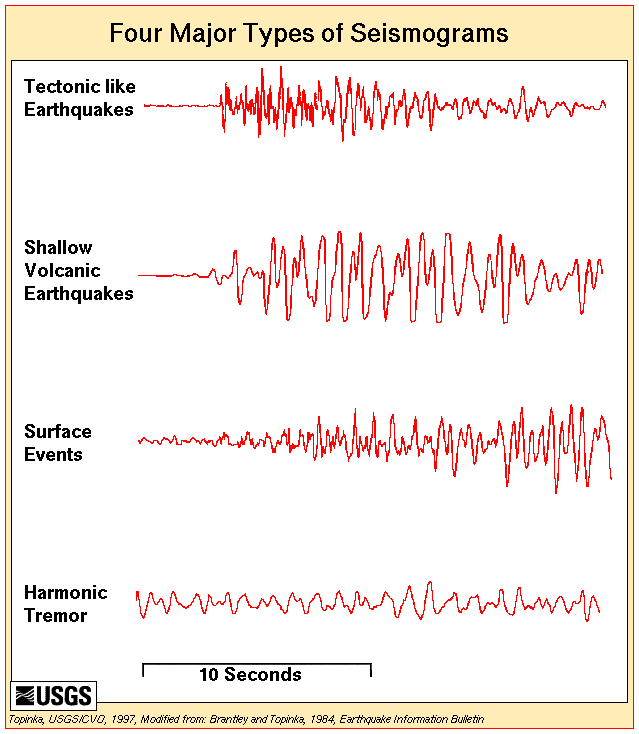 I was first introduced to the term 30 years ago today; the first weak harmonic tremors were recorded at Mt. St. Helens on April 1, 1980 (no fooling!), and stronger tremors were recorded on April 2. According to my (not always dependable) memories, this was seen as further confirmation that magma was moving around under the mountain. From the summary of pre-eruption events at the Mt. St. Helens National Volcanic Monument, a section of a siesmogram from April 2:
I was first introduced to the term 30 years ago today; the first weak harmonic tremors were recorded at Mt. St. Helens on April 1, 1980 (no fooling!), and stronger tremors were recorded on April 2. According to my (not always dependable) memories, this was seen as further confirmation that magma was moving around under the mountain. From the summary of pre-eruption events at the Mt. St. Helens National Volcanic Monument, a section of a siesmogram from April 2:
 Here in the PNW, spring days are often completely cloud covered, with nary a break in sight. April 2 1980 was one of those days. But an energetic and enterprising volcano can still make its presence abundantly obvious. (USGS photos courtesy of Dan Miller. )
Here in the PNW, spring days are often completely cloud covered, with nary a break in sight. April 2 1980 was one of those days. But an energetic and enterprising volcano can still make its presence abundantly obvious. (USGS photos courtesy of Dan Miller. ) 1. First appearance of explosion as steam-rich portion of plume penetrates cloud layer.
1. First appearance of explosion as steam-rich portion of plume penetrates cloud layer. 4. Darker, more ash-rich portion of plume penetrates cloud layer. (The other three photos in this sequence can be seen here) In other news of the day,
4. Darker, more ash-rich portion of plume penetrates cloud layer. (The other three photos in this sequence can be seen here) In other news of the day,April 2 - At least 12 plumes of steam and ash were observed above the mountain. One reached an altitude of 20,000 feet. Light ashfall was reported in Portland and Vancouver. At least one explosion threw out chunks of ice that fell to the west of Spirit Lake.
There were 63 earthquakes larger than magnitude 3.0, including 5 larger than 4.0 (the largest was magnitude 4.8). A stronger burst of harmonic tremor was recorded between about 7:35 and 7:50 AM. The 2nd would turn out to be the most active day for earthquakes with magnitudes greater than 3.0 for the entire month of April.
Harmonic Tremors is also a Geoblogosphere blog.
ReplyDelete